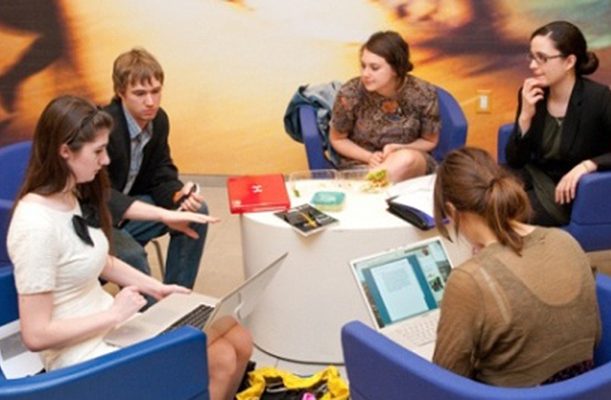The following article was originally sourced from “The Top Three Collaboration Mistakes – and How to Fix Them,” an interview with Professor Leigh Thompson published on Kellogg’s News & Events page.
Professor Leigh Thompson, director of the Kellogg Team and Group Research Center and the Kellogg Leading High Impact Teams Executive program at Kellogg School of Business, knows that collaborating in teams isn’t as easy as it may seem. So she has put together a list of the top three collaboration mistakes people make when meeting and brainstorming.
Problem 1: The “group-negative split,” going with the first idea generated
According to Thompson, research indicates that most groups often generate just one or two ideas and then stop the brainstorming process. Research shows that 75-percent of ideas are brought to the table in the first half of a meeting, with people filling the remaining time in unproductive ways. The key, said Thompson, is knowing how to continue stimulating ideas.
How to fix it:
To counteract this, simply bring a bunch of ideas to the table. Thompson says that it is kosher to encourage things considered absurd and the politically incorrect. Set all notions aside and focus on crafting as many ideas as possible.
Problem 2: Taking turns
While many of you have been taught to politely (or impolitely) wait for your turn to speak when others are engaging in sequential conversations, you’ve done yourself and your group no good. A minority consumes a majority of the group’s scarcest resource—time. So chuck that conch shell you’ve been passing around.
How to fix it:
Thompson suggests that group members simultaneously produce ideas using Post-Its, note cards, index cards, or electronic submission. Groups that have words, pictures, and objects on the table generate more ideas than those who keep ideas to themselves.
Problem 3: Meeting for one or two hours
Most groups work to fill the scheduled time allotted to them. However, results show that no significant improvement in performance is evident when groups meet longer.
How to fix it:
Thompson feels as thought a better idea is to cut your scheduled meeting time in half, take a five- to 10-minute break and then resume but only resuming is necessary.
